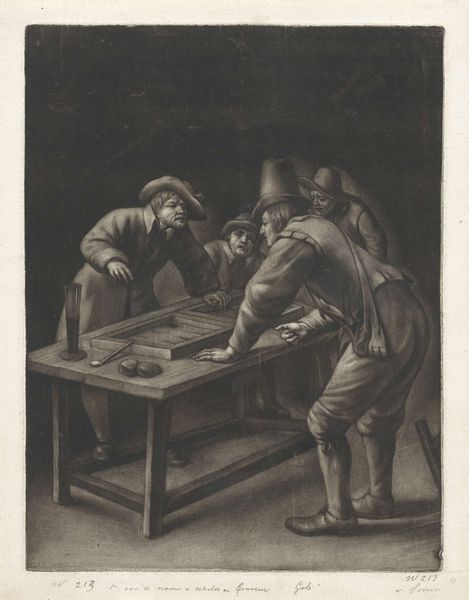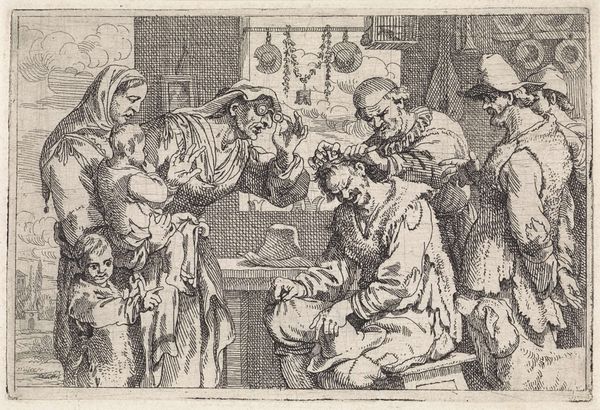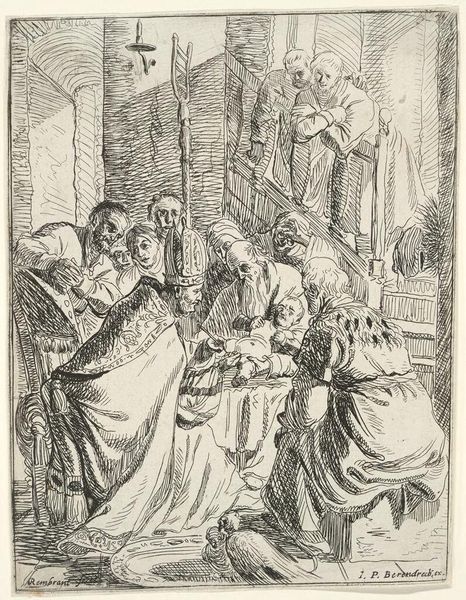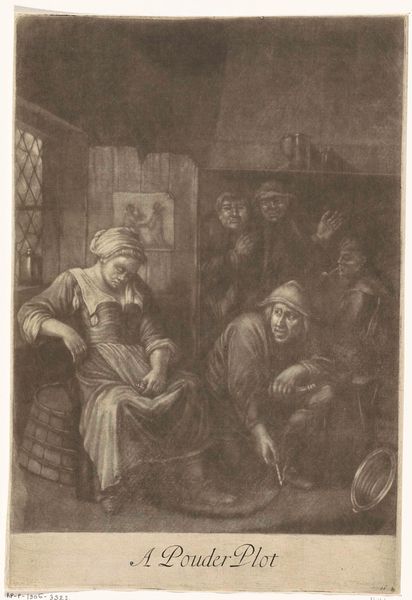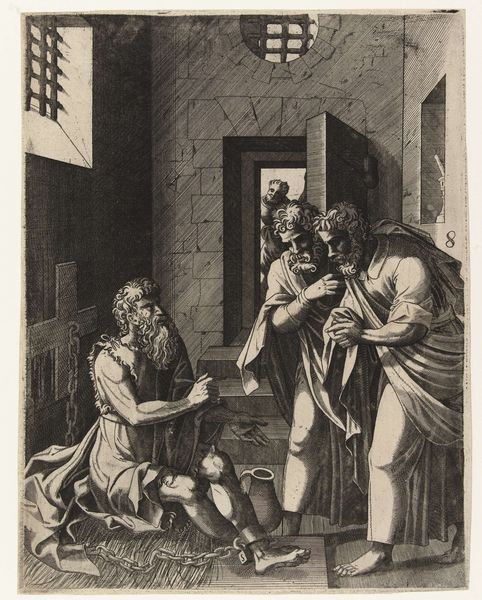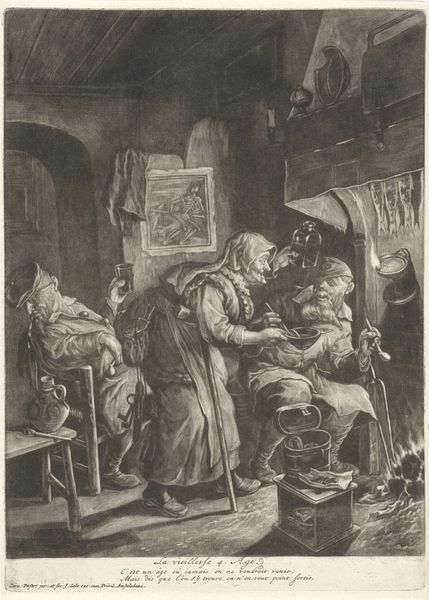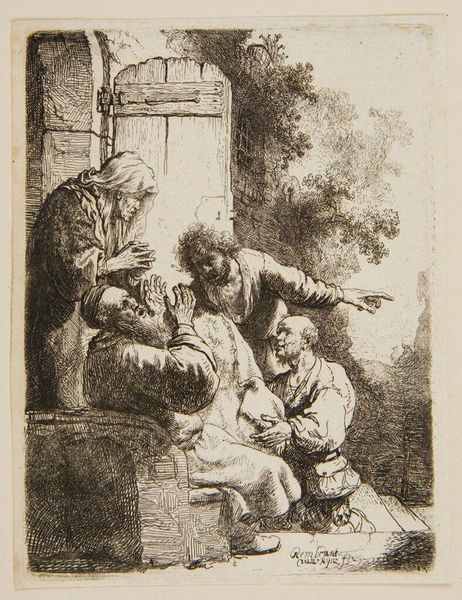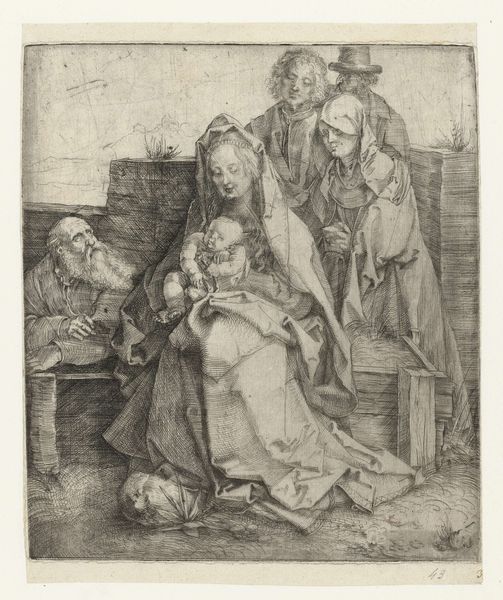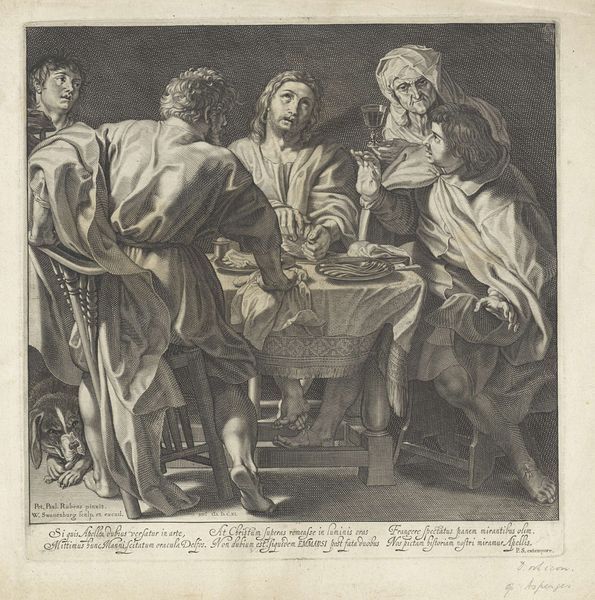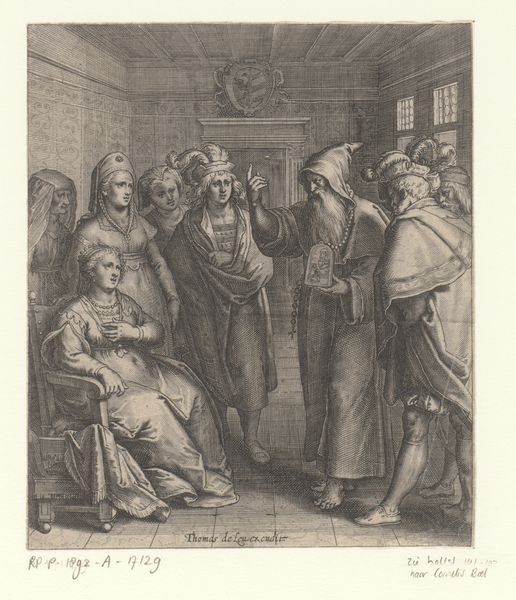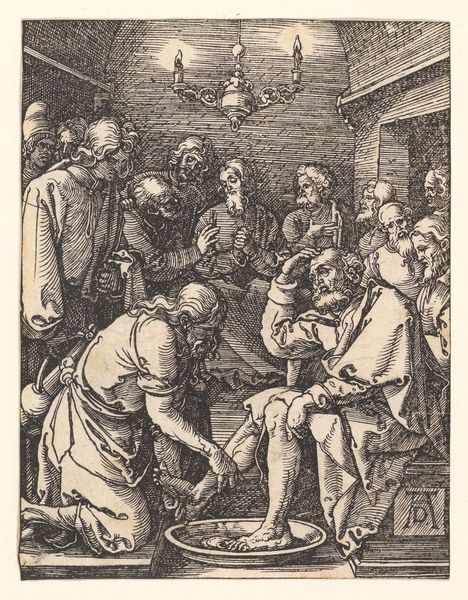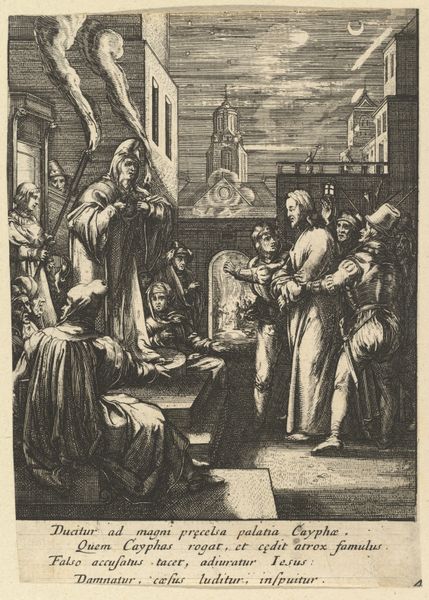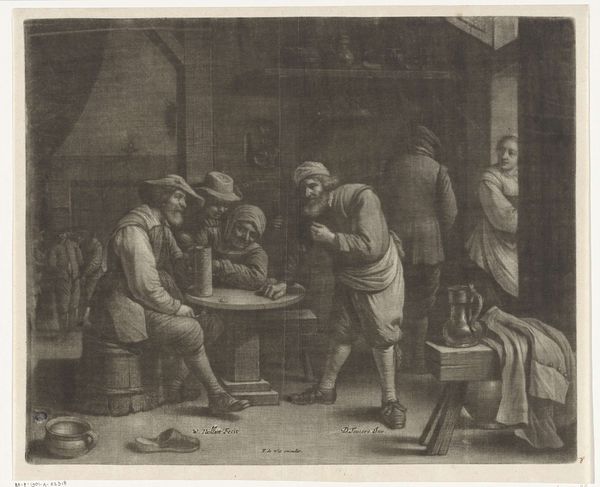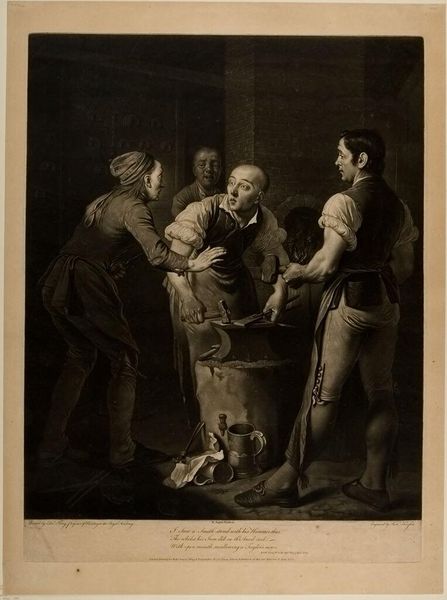
The Seven Sacraments - Baptism 1712
0:00
0:00
giuseppemariacrespi
Gemäldegalerie Alte Meister, Dresden, Germany
painting, oil-paint
#
baroque
#
painting
#
oil-paint
#
genre-painting
#
history-painting
Copyright: Public domain
Curator: What we have here is "The Seven Sacraments – Baptism" created around 1712 by the Bolognese master Giuseppe Maria Crespi. Part of a series, this oil on canvas work resides at the Gemaldegalerie Alte Meister in Dresden. Editor: Immediately, I'm struck by the deep shadows and the very dramatic illumination centered on the figures, giving it such a hushed and almost sacred aura. Curator: Absolutely, that chiaroscuro is so very typical of Baroque painting, adding to the emotional weight and drawing the eye directly to the baptism itself. Crespi's placement in Dresden highlights his important position in disseminating that Italian Baroque style in Central Europe. Editor: Looking closer, the symbol of cleansing through water is, of course, key. But it's also interesting to observe how baptism often signifies communal identity, drawing clear lines between inclusion and exclusion. This makes one consider Crespi’s choices—who is being embraced and who is being subtly ostracized within the light and darkness? Curator: Interesting. You’ve hit on a really good point regarding its historical context. These paintings depicting Catholic sacraments were often used in the period of Counter-Reformation. This artwork then emphasizes a return to traditions that could clearly be seen and recognized by the Church. Editor: And from a symbolic point, consider the fragility of the infant—representing not just a new beginning but the vulnerability of human life and the protective role of the church. Curator: Yes, this series gave him license to paint outside of religious, history, and court paintings for a modern public hungry for representations of itself and its beliefs. Editor: Looking at it now, my first impression, now infused with historical awareness, lingers. The balance between shadow and light carries a moral implication; how the rite transforms individuals, how it binds community—both declared and implied. Curator: Indeed. I find my appreciation renewed seeing it within its complex history as part of not just the Bolognese school but in terms of social and religious movements that so impacted daily life in Europe at the time.
Comments
No comments
Be the first to comment and join the conversation on the ultimate creative platform.
